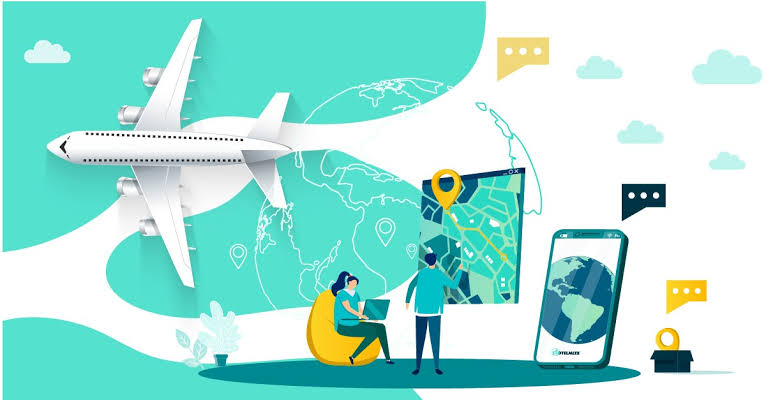This explores the impact of smartphones on travel and navigation underscores their transformative role in shaping modern travel experiences, emphasizing convenience, accessibility, and sustainability in global tourism.
Smartphones have revolutionized the way we travel and navigate. Fundamentally altering how we plan trips explore destinations and navigate unfamiliar terrain. With their multifunctional capabilities from GPS navigation to real-time travel updates. Smartphones have become indispensable tools for modern travelers. They offer convenience, accessibility and enhanced safety throughout journey.
Enhanced Accessibility and Convenience
One of most significant impacts of smartphones on travel is enhanced accessibility to information and services. Travelers can now research destinations. They can book accommodations and plan itineraries directly from smartphones eliminating need for traditional guidebooks or travel agencies. Apps like TripAdvisor, Airbnb and Google Maps provide comprehensive travel resources user reviews. Personalized recommendations at touch of a screen empower travelers to make informed decisions in real-time.
GPS Navigation and Real-Time Updates
GPS navigation capabilities integrated into smartphones have revolutionized how travelers navigate unfamiliar territories. Services like Google Maps Apple Maps and Waze offer turn-by-turn directions. Real-time traffic updates. Alternative route suggestions based on current conditions. This technology not only enhances travel efficiency but reduces navigation-related stress. Enabling travelers to explore new destinations confidently without fear of getting lost
Exploration and Discovery
Smartphones facilitate spontaneous exploration and discovery by providing instant access to information about nearby attractions, restaurants, and points of interest. Travelers can use location-based apps to discover hidden gems, cultural landmarks, and local events happening in real-time. This capability encourages serendipitous experiences and cultural immersion, allowing travelers to engage more deeply with their surroundings and communities they visit.
Language Translation and Communication
Language barriers are less daunting with smartphones equipped with translation apps and communication tools. Apps like Google Translate enable travelers to translate text, speech, and even images in real-time, facilitating communication with locals and enhancing cross-cultural interactions. Additionally, messaging apps and social media platforms enable travelers to stay connected with friends and family back home, share travel experiences, and seek advice or recommendations from their social networks.
Safety and Emergency Assistance
Smartphones play a critical role in enhancing traveler safety and providing emergency assistance. Travelers can use their phones to access emergency contact numbers, locate nearby hospitals or police stations, and communicate their exact location to emergency services during crises. Safety features like location sharing and SOS alerts offer peace of mind to travelers and their loved ones, ensuring prompt assistance in unforeseen situations.
Photography and Documentation
The quality of smartphone cameras has transformed travel photography, enabling travelers to capture high-resolution images and videos of their experiences effortlessly. Social media platforms and cloud storage services allow travelers to document and share their travel memories instantly with a global audience. Smartphone photography also serves as a digital diary, preserving moments and experiences that can be revisited and cherished long after the journey ends.
Environmental Impact and Sustainability
Smartphones contribute to sustainable travel practices by reducing the need for paper maps, printed tickets, and physical guidebooks. Digital ticketing, electronic boarding passes, and mobile payments streamline travel processes, minimizing paper waste and carbon footprints. Additionally, apps promoting eco-friendly travel options, such as public transportation routes and bike-sharing services, encourage travelers to make environmentally conscious choices during their journeys.
Challenges and Considerations
Despite their numerous benefits, smartphones pose challenges related to over-reliance, privacy concerns, and digital distractions while traveling. Over-reliance on technology may hinder authentic travel experiences and personal interactions with locals. Privacy risks associated with location tracking and data security require travelers to exercise caution when using travel apps and sharing personal information online. Moreover, digital distractions can detract from immersive travel experiences and disconnect travelers from their immediate surroundings.
Future Trends and Innovations
Looking ahead, the future of smartphones in travel and navigation holds promise for continued innovation and integration with emerging technologies. Augmented reality (AR) applications could enhance travelers' experiences by overlaying digital information onto real-world environments, providing interactive guides and historical context at landmarks. Artificial intelligence (AI) algorithms may personalize travel recommendations based on individual preferences and behaviors, offering curated experiences tailored to each traveler's interests.
Conclusion
Smartphones have fundamentally transformed the landscape of travel and navigation, empowering travelers with unprecedented access to information, navigation tools, and communication platforms. As smartphones continue to evolve and integrate with advanced technologies, their role in enhancing travel experiences, promoting sustainable practices, and facilitating global connectivity will only expand. By leveraging the capabilities of smartphones responsibly and innovatively, travelers can embrace new adventures, explore diverse cultures, and create lasting memories in an increasingly interconnected world.
